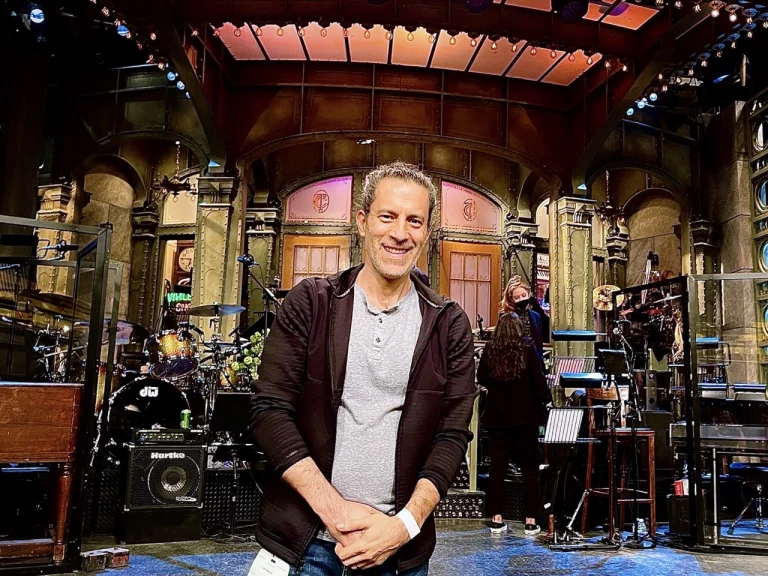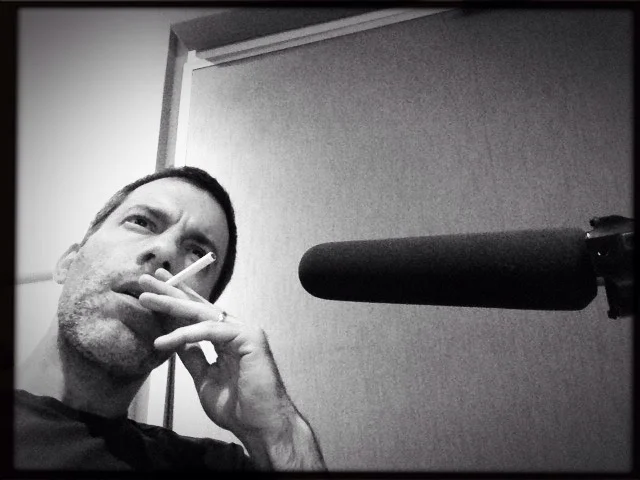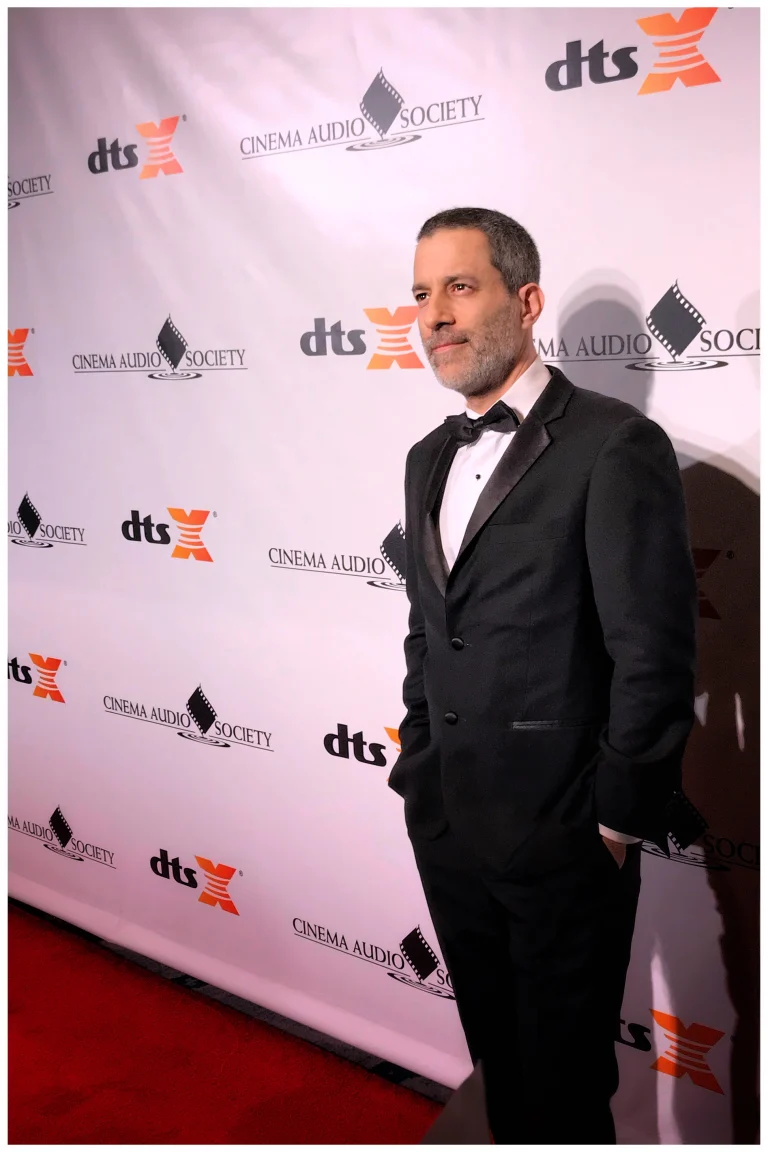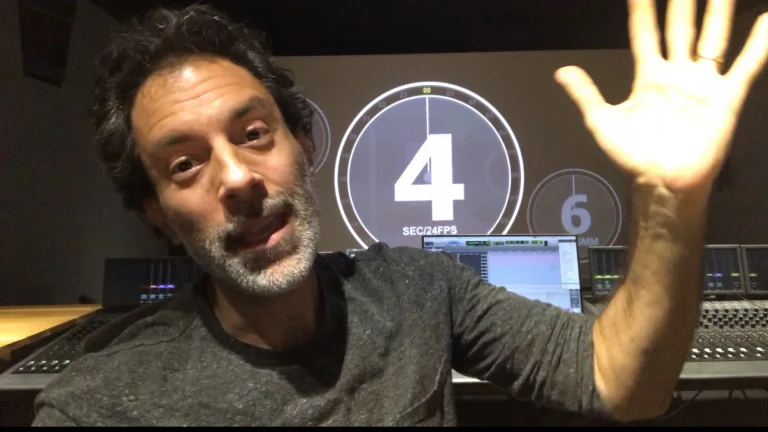Eric Milano on Crafting Soundscapes for Hollywood and Beyond

With over 25 years of experience in film, television and advertisement, sound designer and re-recording mixer Eric Milano has a huge portfolio of credits to his name. A two-time Primetime Emmy Award winner, he has applied his expertise to projects and series’ such as Saturday Night Live, Inferno, Apollo 11, The Tonight Show with Jimmy Fallon, It’s In The Game: Madden NFL, and hundreds more.
Despite music being his first love when growing up, Eric Milano’s early career journey was as unconventional as it was intriguing. Originally from New York City, he began as a biology major working in a gene therapy research lab – a field worlds apart from where he would ultimately end up. He then became an elementary school science teacher and it was during one of these teaching stints that a casual conversation with a colleague’s husband opened the door to the audio industry. Through the iconic Green Street Recording studio in New York City, Milano transitioned into the world of recording – a leap that set the stage for the rest of his career.
How did those early experiences shape your path into the world of sound design?
It was quite the eye-opening experience. I quickly got to work with some big name bands which felt incredible. It was an all analog studio and there wasn’t a single computer in there, but occasionally bands would rent a Pro Tools system and set it up next to the console. But after a year, the studio and its personalities got too intense and it didn’t feel like I could move up or even learn very much there. Perhaps that killed my love of it a bit. This was at the dotcom boom in around 1999 or 2000 and a friend of mine was working for a place called giftcertificates.com. I went to work there for a little while and when the company decided to move their HQ to California, they gave me a little severance package. That money gave me a few months where I didn’t need to work and I tried to figure out what the hell I was going to do with my life.
I must have been about 27 and very into Pro Tools due to recording with my own band. I was all over the DUC (the Pro Tools user discussion page). Someone had posted a message on there saying they were looking for help organizing their sound library. I wrote to the guy and he turned out be Tom Paul, a virtuoso audio mixer just getting his own very successful studio off the ground. He was living in upstate New York and I would borrow my parents’ car and go up and see him. At first, he only had me rebuild his fence, dig holes or install new parts into his Airstream trailer. After a few days, I asked him, ‘Um…didn’t you take me on here to help with sound?’ and he replied ‘patience grasshopper, patience’. (To this day, over 20 years later, he still calls me grasshopper). After about two weeks, he told me I was hired and so, my post-production audio career began.
Tom had a great influx of clients – he would mix and I would do everything else. I was the foley artist, the dialogue editor, the sound effects editor, foley editor, ADR recordist, you freaking name it. I got intense, balls to the wall training in every aspect of post production sound which I still use to this day. Knowing how to make it all work yourself is a deeply valuable commodity. I believe it was the key to my Emmy wins. I was the only member of that sound team!
It was quite the eye-opening experience. I quickly got to work with some big name bands which felt incredible.
Was there a moment when you thought, actually, I'm doing some real work here?
It was pretty early on because I was thrown into the fire. I wanted to do the real work because this felt like a career I could actually commit to – having just come from not knowing what the heck I was going to do in life. But this? This felt like a once in a lifetime opportunity. I wanted to make it happen and Tom was giving me the chance.
Not long after I started working for him, we flew down to Brazil for two months to work on a couple of films for one of his clients. What an incredible experience! I messed up plenty and Tom would just show me how to do it better. He could see that I had the potential to really get it right and was training me. Molding me really. Of course, I didn’t understand it all yet, but really, it was from the beginning that I was doing real work. He was making me do it and there were huge pressures on me to make it happen so make it happen I did – there was no other option.

You said you were doing everything but did you ultimately end up on dialogue work because that was what you preferred?
Yeah, I currently do mostly mixing work but also a lot of dialog editing jobs. About a decade ago I got very into mixing and was blessed to be able to support myself doing only that. Mixing is my love. Sound effects in the other hand can be quite a stressful thing because you’re ultimately trying to please someone else’s sensibilities (the director, or the sound supe!). Whereas we all can agree on what good dialogue sounds like! It just feels more natural for me to be the one mixing the sound effects. Taking what’s already there and using my talents to bring it to life rather than creating it all from scratch – it can be super fun and a creative release to do sound effects and design too but I often find it demanding and stressful because it needs to be so good! For me it’s about taking something mediocre or challenged and using my mixing chops to make it face-shatteringly good. That’s fun!
I understand that ADR is getting harder because some people just don't want to come back for ADR, what kind of challenges are you dealing with day in day out?
Yes, that’s very true. To make something recorded in a studio sound exactly as it was recorded on set has always been a challenge. One of the most important roles that sound plays in a movie is to make you feel like you’re there – to make you forget you’re sitting a theater. So, when a character is talking onscreen and all of the sudden, his voice switches from an on set recording to an ADR recording, then, boom! – you’re no longer buying it. You’re no longer escaping your own world for 90 minutes into a dream world. Even if you’re not a sound guy, you still notice on a subconscious level and get thrown out of the pocket.

Are you working a lot with production sound because you just can't get ADR back in the room or because it's the budget?
Yeah. But in fact, I often prefer working with production sound, depending on how bad it is, because it wasn’t always easy to make the ADR sound realistic. People expect its easy because they’ve seen you do it so many times before. They don’t realize that it’s very much dependent on the specific reasons why it’s sounding bad.
Talking about it sounding bad, you must have been on quite a cleanup journey over the years, what were you doing in the early days? Were you just trying to EQ and filter stuff?
Exactly. EQ and filter but I also believe that reverb played (and plays) an immense role. You can really do a lot with reverb and the Chameleon plug-in is one of the greats. I find it astounding because it can do 80% of the work for you. You can make an ADR line feel like it’s in the same room as production with a click! It’s hitting whatever our brain algorithms are that recognize, ‘oh, same room’. It automatically puts you in that world. You’re in the movie theater and you’re still believing you’re in the movie. So yeah, a plug-in like Chameleon is incredible.
How were you doing it before Chameleon? Were you going back to the people who'd been on set and asking what room they were in, what type of surfaces, etc or did you just have to try and guesstimate it?
Yes, guessing, absolutely guessing. You could futz it a little bit. It’s not like you had to have the exact same room – you know, it’s a room. It’s got some early reflections, it’s this size and these materials. You could do it through that and you just flipped through different settings using experience and intuition until you got it sounding close enough.
So, what happened when you first tried Chameleon?
My jaw dropped. It’s unbelievable. I was like, ‘What? You can just click a button and all of a sudden you have the same space? Are you serious?’ It was unbelievable to me and it really works. It’s ground-breaking.
Let’s talk about dxRevive. There's quite a lot of options out there like iZotope RX etc and you’ve obviously used that, did you have the same kind of feeling when you first used dxRevive?
Yeah. I mean iZotope has been incredible for years, and they’re still incredible with things like removing clicks or distortion, or their spectral repair and a few other great modules. For noise, even when they were the best, they still weren’t quite doing it. There were times when it didn’t work, or there were times when you could really hear the artifacts or when other plugs were just better suited. So, it was great for the time, but it definitely wasn’t perfect. Whereas dxRevive? Again, ground-breaking. The noise reduction itself is revolutionary, however, that came out at the same time as a few other “AI” plugins that were equally revolutionary in how great their noise reduction was. The thing that sets dxRevive out in front is its EQ synthesis. I’ve been trying to get the word out to some of my friends. I work at Saturday Night Live and I mentioned this plugin so much to my boss that he finally caved and bought it for us.
dxRevive can make poorly recorded dialog sound like you’ve actually recorded it well. And it can do that in some way to most recording. And that’s incredible. It was astounding when I first started playing with it. With dialogue, its spectrum is updating thousands of times a second, and its effects are following it as the person’s voice goes up and down – it’s like voodoo. It does make me think, are they going to be able to analyze any voice and make any other voice sound like it’s got the exact same EQ characteristics? It feels like ADR will no longer be a problem to have to match or even matching someone you’ve recorded at two different times – it feels like that’s on the horizon and Lord knows what else.
dxRevive can make poorly recorded dialog sound like you've actually recorded it well. And it can do that in some way to most recording. And that’s incredible.
Several dialogue editors have told me that they sometimes will dereverb a piece of audio and clean it with dxRevive and then get Chameleon to reinstate the reverb, are you doing that trick?
Sure I’ve used that trick even before all these new plugins because there were some dereverb plugs around for a while, and some of them weren’t bad so I’ve definitely done that where you remove it first, fix, and then re-add it.
Is there any advice you would give to your 16-year-old self if you were to start all over again?
Well, you know I’m very into Zen and Buddhism and things like that and so all I can really think of to say to him is, ‘it’s going to be okay’. In fact, it already is okay. It’s just a matter of noticing it. I think the most important thing for a human is to be happy. It’s not so important that you’re a great sound mixer with lots of Emmys or whatever your thing is. It’s happy. A happiness with some sort of staying power is all anyone’s ultimately looking for. And it’s already there! You just have to learn how to see it. So that’s the advice I would give my 16-year-old self.

And are you happy doing this?
I am. I am very happy. I think that 16 yr old did ok. I’m especially happy to have gigs like Saturday Night Live which is new and exciting! I only got that job a couple years ago. It blew my mind how different it was from what I had been doing for years in that I would get thrown into a situation every night where I would be using all my skills gained over twenty years. At Saturday Night Live you have to do it all and you have to do it at blistering, just blistering speeds. That’s when all the experience comes in handy.

